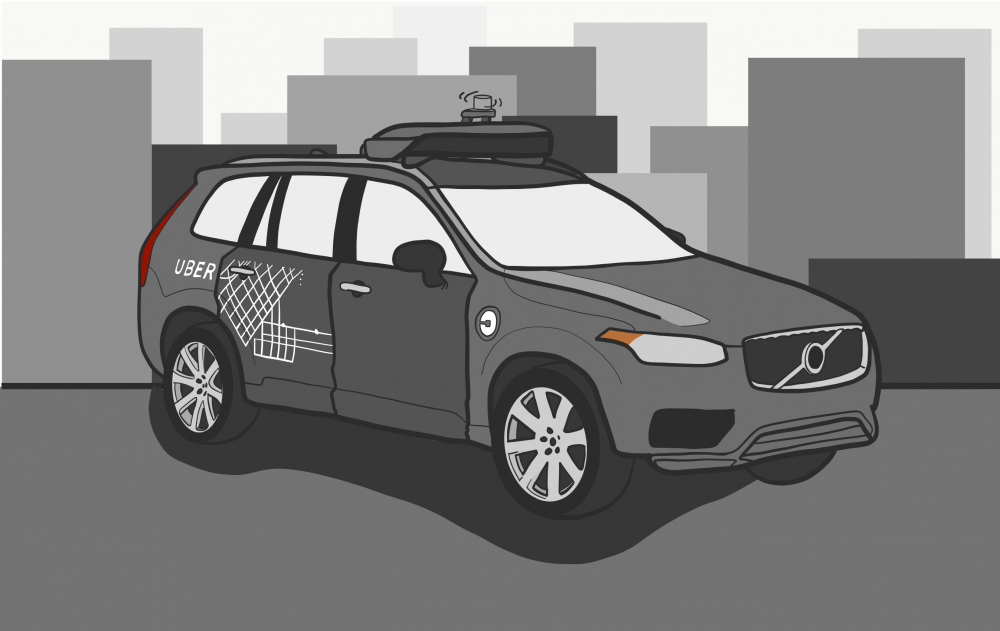Following the fatal accident involving a self-driving Uber and a pedestrian on March 18, ASU experts said that autonomous technology is likely to continue developing but with an eye for more safety measures.
The accident raised questions about the future and safety of autonomous technology and is currently under investigation by Tempe Police.
Andrew Maynard, a professor who focuses on risk innovation in the School for the Future of Innovation in Society, said that despite the recent accident, human-driven cars pose a greater risk to safety than autonomous cars do.
“Even though we are quite in love with our cars, it's actually quite a dangerous combination – humans who are not perfect with 4,000 pounds of metal and plastic,” Maynard said. “This is why we have nearly 40,000 road fatalities a year with car crashes.”
Maynard said that if autonomous technology can be significantly improved, scientists hope to see a reduction in the number of traffic-related accidents.
“If we can actually create vehicles that can safely and effectively drive themselves, there are a number of things we can do,” Maynard said. “If it's developed correctly, the technology can be far better than a human at detecting what's around it and taking appropriate action.”
Ashraf Gaffar, an assistant professor at the University who focuses in both human/car and human/robot interaction, said self-driving cars must calculate for millions of possible scenarios. Along with an ever-changing team of students, Gaffar models potential driving situations for autonomous vehicles in his simulation lab.
"Each driving moment is a different situation," Gaffar said. "What we have on the road is autonomous vehicles trying to collect more of these situations and understand them, but there will always be a new situation."
As for training its vehicle operators, Uber says that before hitting the roads, potential vehicle operators must undergo a training program that includes assessment by a third-party driving school and three weeks of training by a specialist team to understand policies, procedures and how to drive the car. Trainees shadow experienced vehicle operators and have to pass each level of instruction in order to receive certification.
The cars in Uber’s program are Level 4 autonomous vehicles, as defined by SAE International, an organization for engineering professionals with a focus on transport industries. A Level 4 classification indicates high levels of automation with minimal human input. Some lower level autonomous technology features, such as cruise control and automatic parking, are already commonplace in modern cars.
What actually caused the accident is currently under investigation.
While nothing can be confirmed until the investigation is concluded, Gaffar said that low lighting could have been a factor in the accident that occurred. However the autonomous vehicles are equipped with tools such as radar to compensate, he said. Maynard disagreed, saying that the other tools should have been enough to ensure the safety and functionality of the vehicle.
Despite this, Maynard also said the benefits of autonomous driving technology extend beyond safety, allowing for more freedom for people who cannot drive themselves.
“Children, young people, older people, people with disabilities – what good autonomous technologies do is that they give them ability that they don't already have,” Maynard said. “This really could be very empowering.”
Maynard said that autonomous vehicles could eventually improve public transportation systems by offering more convenience to riders of publicly-available vehicles.
There could be unintended consequences, however, of this emerging field.
“If the technology doesn't work as we expect it to work, you've got a safety issue,” Maynard said. “We saw that with the collision issue over the weekend.”
Maynard also said it is important to consider the ramifications of replacing people who drive for a living with autonomous vehicles. Taxi, truck and car-sharing drivers could lose their jobs.
“We're going to have to think very seriously about how this autonomous technology is going to displace their jobs and what we do about it,” Maynard said.
Furthermore, self-driving cars may not be appropriate for all scenarios.
“Think about the area around schools, for instance, and the greater worries about children being knocked over,” Maynard said. “There are number of cases where we really need to talk to the communities (about the advantages and disadvantages of autonomous driving) so we can make informed decisions.”
Gaffar said that Arizona's autonomous vehicle-friendly legislation is smart for allowing the industry room to grow.
"I think autonomous vehicles are here to stay," Gaffar said. "We just need to be cautious about our expectations."
Reach the reporter at sabine.galvis@asu.edu or follow @sabinegalvis on Twitter.
Like State Press on Facebook and follow @statepress on Twitter.




